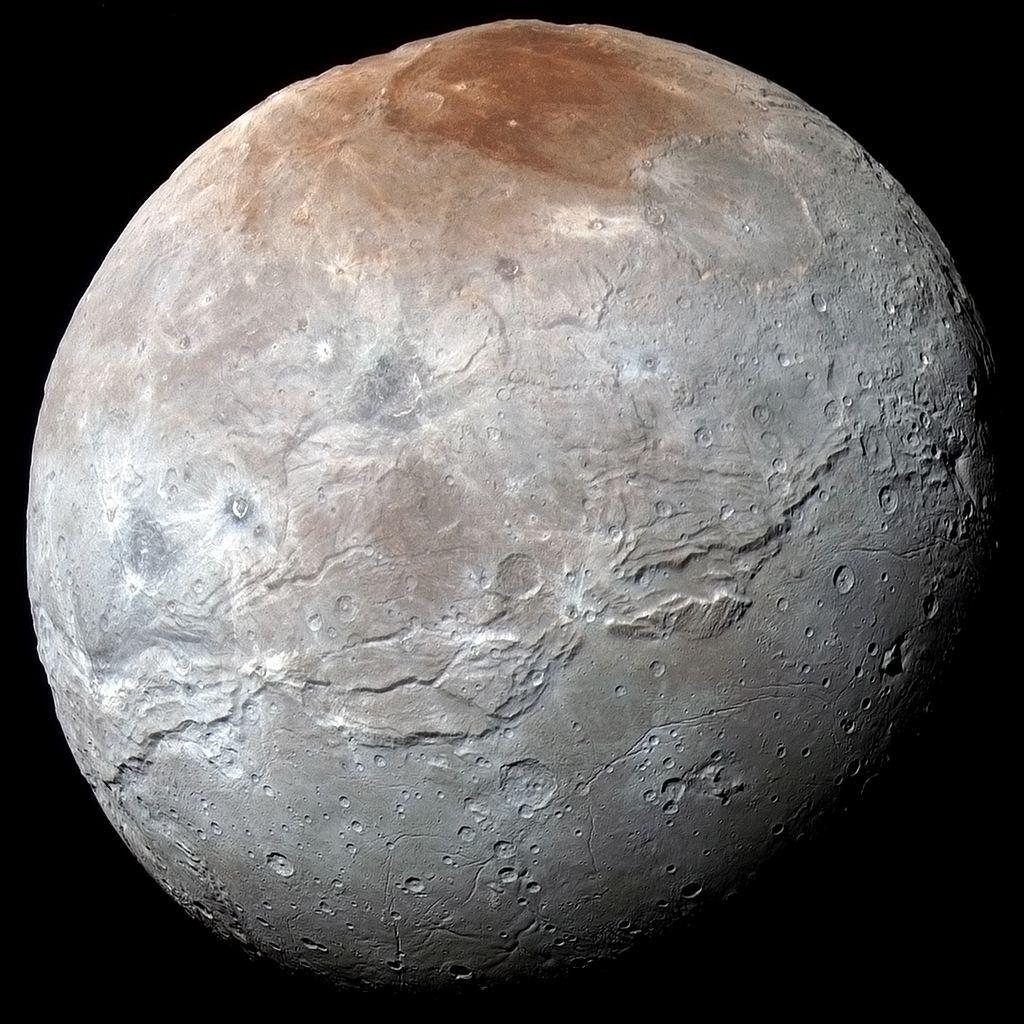Selection of the most interesting space news for breakfast: Scientists have found out why Pluto’s moon wears a red cap. “Hot” robots can be useful in nuclear space missions, and the Chinese probe “Tianwen-1” has completed its main mission on Mars.

Japanese want to create a space base with artificial gravity
Researchers from Kyoto University and specialists from Kajima Construction Co., Ltd presented a mock-up of a “residential structure with artificial gravity”. The structure, which is called “The Glass”, will be formed in such a way as to simulate terrestrial conditions, using centrifugal force to recreate gravity. The rotating structure will make a complete revolution every 20 seconds. Japanese scientists have noted that humanity is gradually moving from thoughts about staying in outer space to life on the Moon and Mars.
China’s Tianwen-1 completing its primary mission
China’s Tianwen-1 space probe has taken images covering the entire Mars. The researchers explained that this was done thanks to six devices: an orbiter, two deployable cameras, a lander, a remote camera and a rover.
To get all the images, the orbiter had to fly around Mars 1,344 times, so now researchers have photos of the planet from any side. The scientists’ statement notes that the probe has completed all tasks, including taking medium-resolution images covering the entire planet.
Market News

Super Heavy “flared up” during tests
During the testing of the prototype of the first stage of the Super Heavy, a fire occurred. SpaceX’s specialists are currently assessing the damage caused. SpaceX conducted another series of tests of the Super Heavy prototype, a huge stage that will be used to launch the new Starship spacecraft. At some point, a large fireball flared out of the propulsion system of the unit. It led to a fire on the launch pad, which was eliminated after a while.
China to target object for asteroid deflection mission
China has set its sights on near-Earth object 202 PN1 as the target for a combined asteroid deflection and observation test mission. It is due to be launched in 2026 on a Long March 3B rocket and will include a separate impactor and an orbiter. The first will collide with the near-Earth object 2020 PN1, and the second will conduct observations.
Interesting

Red polar cap of Pluto’s moon Charon is formed when the seasons change
New research shows that the process of forming “tholins” is a little more complicated than previously known. Scientists thought that the red cap of the moon was formed when ultraviolet light destroyed methane molecules. However, thanks to a new scientific work written by scientists from the Southwest Research Institute (SwRI) in Texas, it became known that color occurs due to the interaction of ultraviolet and solar wind with hydrocarbons. This results in a mixture of organic compounds called “tholins”.
‘Hot robots’ may be necessary for nuclear space missions
The future of deep space exploration might depend upon what some engineers call “hot robotics”. These robots are designed to go places where humans cannot. They are widely used inside decommissioned nuclear reactors. These well-protected mechanisms help with tasks such as reactor inspection and waste treatment. Now scientists and engineers hope to use them for new tasks, including space.
Prospecting for Interstellar Oil
Scientists have developed a new method to look for carbon compounds in space, akin to prospecting for oil on Earth. Between the stars lie vast amounts of interstellar gas and dust, spread thinly throughout our Galaxy.
The dust can contain compounds of carbon. When it does we call it carbonaceous interstellar dust. This is an important reservoir for the organic material in space. The continual cycle of material between the stars and the gas in the interstellar medium in our Galaxy leads to the delivery of organic molecules to newly forming planetary systems.
Hydrocarbon molecules – a subgroup of organic molecules – can be helpful to us for this purpose. Aliphatic and aromatic hydrocarbons – molecules containing chains and/or rings of carbon atoms – make up an important fraction of crude oil on Earth, which has been formed underneath the Earth’s crust from the residuals of the living organisms.
Follow us on Twitter to get the most interesting space news in time
https://twitter.com/ust_magazine

